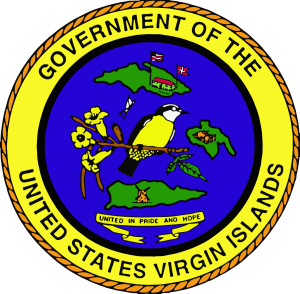Project represents first step in WAPA’s Disaster Recovery Action Plan and first major project funded by HUD Community Development Block Grant funds
U.S. VIRGIN ISLANDS—Governor Albert Bryan Jr., the V.I. Water and Power Authority, the Office of Disaster Recovery and the Virgin Islands Housing Finance Authority held a joint press conference to provide updates to the public on energy initiatives and infrastructure upgrades to reduce rates and increase reliability and resilience of the territory’s electric infrastructure.
WAPA Executive Director Lawrence Kupfer announced a number of items that he said would be fully in place by the end of next year:
- WAPA is issuing a Request For Proposals to purchase four new smaller generating units to add between 36-40 megawatts of power in the St. Thomas-St John District;
- Two emergency generators — one to serve Cruz Bay and one to serve Coral Bay – are being installed on St. John;
- The construction of a number of solar arrays in both island districts;
- There will be no increase to power rates when WAPA increases the base rate and decreases the LEAC (Levelized Energy Adjustment Clause).
Governor Bryan opened the press conference by underscoring that a successful recovery is dependent upon a resilient, stable, and inexpensive power infrastructure.
“There’s no greater destabilizing force you can have on the government than our power. It has to be reliable, and it has to be affordable.” Governor Bryan. “Our economy depends on it, and the people of the Virgin Islands depend on it.”
The Governor also noted that the Government of the Virgin Islands had paid all of its outstanding debt to the Water and Power Authority and all Executive Branch agencies are current on their power bills. Among the payments made to WAPA in July are:
- $11.7 million on behalf of the Juan F. Luis Hospital
- $10.5 million on behalf of Schneider Regional Medical Center
- $700,000 on behalf of the V.I. Waste Management Authority
“We’ve made sure that we’ve paid down our WAPA bills and we have a commitment to keep paying those bills on time,” Governor Bryan said.
WAPA’s energy transformation has three key components
Executive Director Kupfer also gave a comprehensive outline of WAPA’s strategy to increase reliability and efficiency.
The first component focuses on improved resiliency for both of the Territory’s power grids.
The Territory has access to $240 million in Community Development Block Grants-Disaster Recovery (CDBG-DR) funding from the U.S. Department of Housing and Urban Development – with an additional $779 million of CDBG-DR monies expected to be released to the Territory within the next few weeks, according to V.I. Housing Finance Authority Executive Director Daryl Griffith.
WAPA has been authorized to utilize $90 million of those funds to make improvements to its infrastructure which include:
- the hardening of WAPA’s Transmission and Distributions system;
- placing overhead lines underground;
- installing additional composite poles in areas where underground power isn’t viable;
- and hardening the Territory’s substations.
The second component of WAPA’s strategy to reduce rates and increase resiliency will include significantly increasing renewable energy generation in the U.S. Virgin Islands, adding battery backup storage. The first phase of this will include up to 30-megawatts of utility-scale solar arrays to reduce energy costs for customers.
The final component includes improving efficiency and reliability at both power plants on St. Thomas and St. Croix by outfitting each power plant with smaller, more efficient, and renewable compatible generators.
“We were anticipating 49 cents per kilowatt-hour rates by now,” Governor Bryan said, referring to his first State of the Territory speech in January.
However, current rates are at 43 cents per kilowatt-hour, and that will not change when WAPA increases the base rate and offsets that by reducing the LEAC, the Governor said.
Increasing the base rate will allow WAPA to become active in the bond market again so it can refinance its debt obligations while making needed improvements, which Executive Director Kupfer said will result in savings to ratepayers of 5 cents per kilowatt when the new generators come online at the end of 2020.
For additional information, view press conference here.
####

